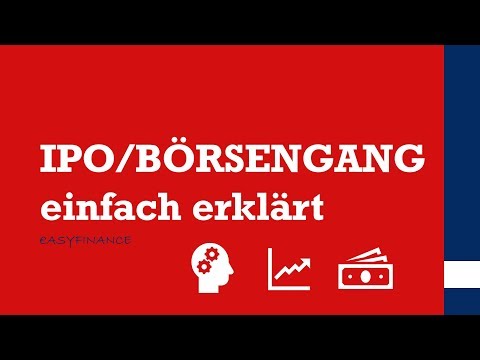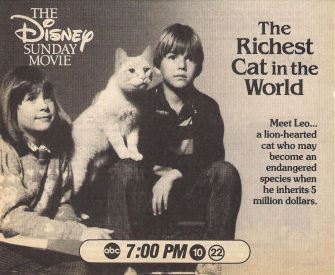Elasticity of Demand: Meaning, Formula & Examples Outlier
Contents:


As a result, demand and supply often—but not always—tend to be relatively inelastic in the short run and relatively elastic in the long run. A good that also poses a health risk, like you mentioned, will affect the “overall demand” rather than the “elasticity of demand”. Assuming Insulin doesn’t expire for a long time (say 2 years, I don’t really know when it expires) then in that case wouldn’t people be inclined to purchase more Insulin at that time because it would save them money. People buy more at that time just because prices are lower, irrespective of whether they are actually going to use it at that particular time.
Association between universal health coverage and the disease … – BMC Public Health
Association between universal health coverage and the disease ….
Posted: Fri, 21 Apr 2023 07:00:00 GMT [source]
While rising prices usually result in lower demand, rising income tends to lead to higher demand. However, in both cases, demand for some goods is more elastic than it is for others. When the price rises on a good with inelastic demand, you or your business may have to absorb this price change. To do this, you might have to purchase fewer luxury goods or items that aren’t necessities. Conversely, when price drops on necessities, it may be wise for businesses to stock up to hedge against future price swings.
How to Use a Demand Curve Graph
This Latin phrase means “other things being equal.” In economics, it refers to how something is affected when all other factors that influence it remain the same. If one of the other determinants of demand changes, the entire demand curve can change and skew the perception of elasticity. Thelaw of demandguides the relationship between price and the quantity demanded. It states that the quantity purchased has an inverse relationship with price. The elasticity of demand tells you how much the amount bought decreases when the price increases. The cross elasticity of demand is an economic concept that measures the responsiveness in the quantity demanded of one good when the price for another good changes.
Week 17 in review: GTA 6, Xperia 1 V, Poco F5 and F5 Pro unveil … – GSMArena.com
Week 17 in review: GTA 6, Xperia 1 V, Poco F5 and F5 Pro unveil ….
Posted: Mon, 01 May 2023 17:58:21 GMT [source]
Goods which are price inelastic tend to have few substitutes and are considered necessities by users. In economics, a demand schedule is a table that shows the quantity demanded of a good at different price levels. The demand curve is a graphical representation of the relationship between the price of a good and the quantity demanded. A good is said to have inelastic supply if the availability of that good does not change significantly in response to price changes. This usually happens when suppliers are already operating at full capacity. Elastic demand refers to the demand for a good or service changing significantly when the price moves up or down.
In 1983, for example, US petroleum consumption was 15.3 million barrels a day, which was lower than in 1973 or 1975. US petroleum consumption was down even though the US economy was about one-fourth larger in 1983 than it had been in 1973. In the short run, it’s not easy to make substantial changes in energy consumption. Maybe you can carpool to work occasionally or adjust your home thermostat by a few degrees if the cost of energy rises, but that is about all you can do. In the long run, however, you can purchase a car that gets more miles to the gallon, choose a job that is closer to where you live, buy more energy-efficient home appliances, or install more insulation in your home.
Constant elasticity and optimal pricing
Addicts are not dissuaded by higher prices, and only HP ink will work in HP printers . The more easily a shopper can substitute one product for another, the more the price will fall. For example, in a world in which people like coffee and tea equally, if the price of coffee goes up, people will have no problem switching to tea, and the demand for coffee will fall. This is because coffee and tea are considered good substitutes for each other.
The availability of a substitute for a product affects its elasticity. If there are no good substitutes and the product is necessary, demand won’t change when the price goes up, making it inelastic. Excel models are available that compute constant elasticity, and use non-constant elasticity to estimate prices that optimize revenue or profit for one product or several products. At an elasticity of 0 consumption would not change at all, in spite of any price increases.
If there were, that means producers and suppliers would be able to charge whatever they felt like and consumers would still need to buy them. The only thing close to a perfectly inelastic good would be air and water, which no one controls. A good is considered relatively inelastic if a 1% price change causes the supply or demand to move by less than 1%. A perfectly inelastic good would be one where demand does not change regardless of the price; however, no such good or service is perfectly inelastic.
- Inelastic stands in contrast to elastic, where the latter witnesses significant changes in demand when the price changes.
- The midpoint method is referred to as the arc elasticity in some textbooks.
- Essential items, such as medication, are considered to be inelastic, whereas luxury items, such as cruise trips and high-end watches, are considered elastic.
- There were, however, a number of sectors in which contacts still pointed to strong selling price increases, at least during the first half of 2023.
- If a good or service has a low inelasticity of demand, its demand will not significantly change regardless of what happens to the real income of consumers.
- In every case, elasticity measures the responsiveness of one factor—typically the quantity demanded or supplied of a good—relative to a percentage change in some other factor such as price or income.
Various research methods are used to determine price elasticity, including test markets, analysis of historical sales data and conjoint analysis. Add inelastic demand to one of your lists below, or create a new one. Subsidies are aimed particularly at a range of nutritional foods for which there is an inelastic demand. We are face to face with what the economists, in their pedantic language, call “an inelastic demand” in the case of sugar. TheLaw of Demandsays that the amount purchased should move inversely to price. That means that there should be a decrease in demand as prices increase, and an increase in demand as prices decrease.
Price Elasticity of Demand Meaning, Types, and Factors That Impact It
This approach has been empirically validated using bundles of goods (e.g. food, healthcare, education, recreation, etc.). The change in price has a less impact on preferences of the people with higher incomes, who prefer the business class. The price is not the most important criterion for these people, that is why any given percentage change in price will cause a smaller percentage change in quantity demanded. Unitary elasticity means that a given percentage change in price leads to an equal percentage change in quantity demanded or supplied. Inelastic products are usually necessities without acceptable substitutes.
These could change, like changing your job for another one closer, but people will still purchase gas—even at a higher price—before making any sharp, drastic changes to their lifestyles. Create a free account and access your personalized content collection with our latest publications and analyses. “Using Gasoline Data to Explain Inelasticity.” Accessed Dec. 1, 2021. In response to this dramatic drop in demand, OPEC+ members elected to cut production by 9.7 million barrels per day through the end of June, the largest production cut ever.
- As the price increases, the percentage change in price is more than the quantity demanded.
- The elasticity of supply or demand can vary based on the length of time you care about.
- With income elasticity of demand, you can tell if a particular good represents a necessity or a luxury.
- TheLaw of Demandsays that the amount purchased should move inversely to price.
- Perfectly elastic demand occurs when the quantity demanded skyrockets to infinity when the price drops any amount.
The demand curve is based on thedemand schedule, which displays the same data in a table format. This table describes exactly how many units will be bought at each price. Everyone needs to wear clothes, but there are many choices about what kind of clothing they want to wear and how much they want to spend. When some stores offer sales, other stores have to lower their clothing prices to maintain demand. During the Great Recession, many clothing stores were replaced by second-hand stores that offered quality used clothing at steeply discounted prices. Understanding whether or not the goods or services of a business are elastic is integral to the success of the company.
Knowing the price elasticity of demand of a good allows someone selling that good to make informed decisions about pricing strategies. This metric provides sellers with information about consumer pricing sensitivity. It is also key for makers of goods to determine manufacturing plans, as well as for governments to assess how to impose taxes on goods. Finally, if the quantity purchased changes less than the price (say, -5% demanded for a +10% change in price), then the product is deemed inelastic. It could even be said that their purpose is to create inelastic demand for the products that they market.
Examples of goods with inelastic demand include gasoline, necessary foods, and prescription drugs. When price changes on these items, demand doesn’t fluctuate much because these items are required in the everyday lives of most consumers. In contrast, demand for luxury goods such as high-end cars, dessert foods, or entertainment tends to be much more elastic. The four main types of elasticity of demand are price elasticity of demand, cross elasticity of demand, income elasticity of demand, and advertising elasticity of demand.
The Structured Query Language comprises several different data types that allow it to store different types of information… You could use the absolute values for the change of quantity and price, as you said, or you could just do the absolute value of the result of your calculation.Both methods are correct. Elasticity can be described as elastic—or very responsive—unit elastic, or inelastic—not very responsive. Hotels with great sea view can charge more than one in the suburbs. A good like salt is a small percentage of income, therefore you will tend to be less concerned about price. Elasticity is a measure of a variable’s sensitivity to a change in another variable.
What is price elasticity of demand?
Income elasticity of demand is the change in quantity demanded of a good or service in relation to the change in real income of a consumer that buys that good or service. Income elasticity of demand will denote whether a product is an essential item or a luxury item. As the price increases, the percentage change in price is more than the quantity demanded. Therefore, the demand for milk is inelastic because it is a convenience good that consumers buy every day, regardless of the change in price.
Vice Ventures Closes a $25M Fund to Invest in Good Companies in … – Femtech Insider
Vice Ventures Closes a $25M Fund to Invest in Good Companies in ….
Posted: Wed, 26 Apr 2023 07:00:00 GMT [source]
Among the most common applications of price elasticity is to determine prices that maximize revenue or profit. Hi this is akbar.i want to know about fully knowledge in elasticity and inelasticity in economics. When demand is price elastic, most of the tax rise is borne by the producer burden. A tax will shift the supply curve to the left, leading to a higher price and a fall in demand. Inelastic stands in contrast to elastic, where the latter witnesses significant changes in demand when the price changes. “Inelastic refers” to the static quantity of a good or service when its price changes.
However, if the price of caffeine itself were to go up, we would probably see little change in the consumption of coffee or tea because there may be few good substitutes for caffeine. Most people, in this case, might not willingly give up their morning cup of caffeine no matter what the price. While a specific product within an industry can be elastic due to the availability of substitutes, an entire industry itself tends to be inelastic. Usually, unique goods such as diamonds are inelastic because they have few if any substitutes. Consider a local car dealership that gathers data on changes in demand and consumer income for its cars for a particular year. When the average real income of its customers falls from $50,000 to $40,000, the demand for its cars plummets from 10,000 to 5,000 units sold, all other things unchanged.
Inelastic refers to the static quantity of a good when its price changes. When the price of a good or service changes and the quantity demanded of that good does not significantly change, the good or service is considered inelastic. Inelastic demand refers to the demand for a good or service remaining relatively unchanged when the price moves up or down.
By contrast, elastic demand refers to products that fluctuate in consumer demand if their price changes. For example, if an item’s price goes up, consumers likely won’t buy as much. If the price goes down, they may end up buying more than predicted. The advertising elasticity of demand is a measure of a market’s sensitivity to increases or decreases in advertising saturation. The elasticity of an advertising campaign is measured by its ability to generate new sales. Other factors influence the demand elasticity of goods and services such as income level and available substitutes.
When price increases by 20% and demand decreases by only 1%, demand is said to be inelastic. Income elasticity of demand measures how much the demand for specific goods and services fluctuates in relation to changes in consumer income. The effect will be similar, but the relationship works in the opposite direction of price elasticity.

Classify the elasticity at each point as elastic, inelastic, or unit elastic. If the quotient is greater than or equal to one, the demand is considered to be elastic. In this case, a cut in interest rates from 5% to 0.5% has only caused a small increase in investment, showing that demand for investment is interest inelastic. If a firm has monopoly power then it is able to charge higher prices. For example, prices on motorway service stations tend to be higher, because consumers can’t choose where to buy food, without leaving the motorway.
According to basic economic theory, the supply of a good will increase when its price rises. Conversely, the supply of a good will decrease when its price decreases. For people with diabetes who need insulin, the demand is so great that price increases have very little effect on the quantity demanded. Price decreases also do not affect the quantity demanded; most of those who need insulin aren’t holding out for a lower price and are already making purchases. A product is considered to be elastic if the quantity demand of the product changes more than proportionally when its price increases or decreases. Conversely, a product is considered to be inelastic if the quantity demand of the product changes very little when its price fluctuates.
Certain staples and basics such as gasoline or milk would not change with income—you’ll still only need one gallon a week even if your income doubles. Current trends in activity were generally expected to persist during the second quarter, while the outlook for later in the year was still subject to elevated uncertainty. Yes, the elasticity is higher in the long run and more inelastic in short run. Would have resulted in a smaller price increase to $14 per barrel and larger reduction in equilibrium quantity to 13 million barrels per day. The luxury market is more elastic since you still can live even you can not afford an LV bag and people will buy more luxuries when there is a discount. A better example of something with perfect elasticity is money itself.
It’s worth noting that demand may be inelastic for a broad category of goods—fruit, for example—but elastic for specific types or brands of that good. So, for instance, consumer demand for fruit may not fluctuate much, but a rise in apple prices might lead more people to buy grapes. Assume that an apartment rents for $650 per month and, at that price, 10,000 units are rented—you can see these number represented graphically below. When the price increases to $700 per month, 13,000 units are supplied into the market.
In the end the whole inelastic demand is meant for burden is carried by individual households since they are the ultimate owners of the means of production that the firm utilises . Cross-price elasticity refers to how much the price of one good fluctuates in response to price changes for another good. When one good can easily be substituted for another, there will usually be high cross-price demand elasticity between them.
